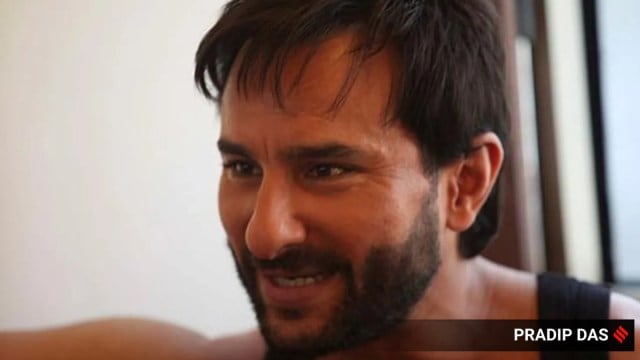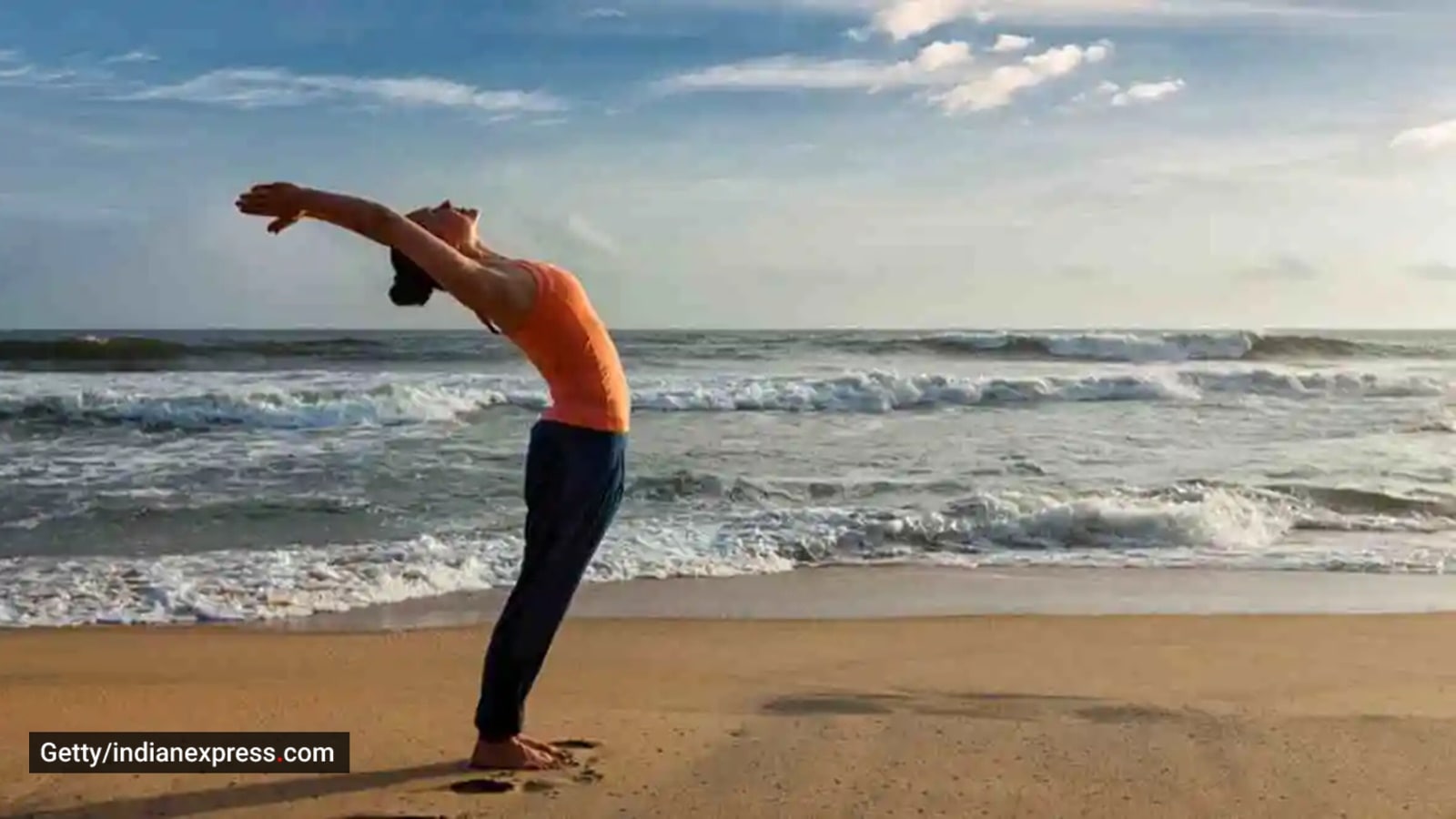📣 For more lifestyle news, click here to join our WhatsApp Channel and also follow us on Instagram
Old video of Saif Ali Khan doing Surya Namaskar resurfaces, fans say, ‘a man who knows his basics can fight all battles’
From enhancing flexibility to promoting mental well-being, yoga is often considered a must for overall health and balance.
 When Saif Ali Khan was spotted doing Surya Namaskar (Express Photo by Pradip Das)
When Saif Ali Khan was spotted doing Surya Namaskar (Express Photo by Pradip Das)At 54, Saif Ali Khan is as fit as a fiddle. The reason may be eating a clean diet, living a healthy lifestyle, and, as an old video suggests, doing Surya Namaskar or sun salutations. Shared by a fan page, the caption reads: “Throwback to SAK doing Surya Namaskar. A true reminder that a man who knows his basics can fight all battles in life. Stay consistent, stay strong. Practice makes all the difference! #stayhealthy”
The video is flooded with comments with many users appreciating his flexibility. “Nice hard work,” one wrote, while another advised, “Please keep strong, Saif.”
Taking a cue, let’s understand all about this mindful practice.
Integrating yoga into your life can offer a myriad of physical, mental, and emotional benefits. From enhancing flexibility to promoting mental well-being, yoga is often considered a must for overall health and balance,” said fitness expert Garima Goyal.
But why?
*Adaptability – From gentle postures for beginners and people with physical limitations to more advanced practices, there is a style of yoga for everyone, regardless of age or fitness level.
*Accessible – Yoga doesn’t require specialised equipment or a gym membership. With a yoga mat and some space, you can practice almost anywhere.
*Complement other exercise forms – Yoga can complement other forms of exercise and be effective for a runner, athlete, or even someone doing weightlifting. “Integrating yoga can enhance overall physical performance, reduce the risk of injuries, and contribute to a more balanced fitness routine,” said Goyal.
 Do you do Surya Namaskar? (Photo: Getty Images/Thinkstock)
Do you do Surya Namaskar? (Photo: Getty Images/Thinkstock)
One of the most popular yoga practices is Surya Namaskar, also known as Sun Salutation, which is a sequence of yoga poses.
“It is a fundamental and dynamic practice that combines several asanas (yoga poses) and pranayama (breathing exercises). Surya Namaskar is not just a physical exercise; it encompasses spiritual, mental, and physical aspects, aligning the body and mind,” said Goyal.
Here’s a breakdown of the typical Surya Namaskar sequence:
1) Pranamasana (Prayer Pose) – Begin by standing with feet together. Bring your palms together in a prayer position at your chest, focusing on centering yourself and setting an intention for your practice.
2) Hasta Uttanasana (Raised Arms Pose) – Inhale and lift your arms overhead, arching backward slightly. Keep your biceps close to your ears, lengthening your spine and stretching your entire body.
3) Hasta Padasana (Hand to Foot Pose) – Exhale as you bend forward from your waist, bringing your hands to the floor beside your feet. Keep your spine straight and engage your abdominal muscles.
4) Ashwa Sanchalanasana (Equestrian Pose) – Inhale and step your right leg back, bringing your knee to the floor. Arch your back, gaze upward, and keep your left knee above your left ankle.
5) Dandasana (Stick Pose) – Inhale and step your left leg back to bring your body into a straight line, like a plank. Ensure your shoulders are directly above your wrists, engaging your core muscles.
6) Ashtanga Namaskara (Eight-Limbed Pose) – Slowly lower your knees, chest, and chin to the floor, keeping your hips slightly lifted. This pose involves eight contact points: two hands, two feet, two knees, chest, and chin.
View this post on Instagram
7) Bhujangasana (Cobra Pose): Inhale, slide forward, and lift your chest, keeping your palms on the ground. Keep your elbows slightly bent, shoulders relaxed, and gaze forward or slightly upward.
8) Parvatasana (Mountain Pose) – Exhale and lift your hips, moving into an inverted V-shape. Keep your heels on the ground, lengthen your spine, and engage your abdominal muscles.
9) Ashwa Sanchalanasana (Equestrian Pose – opposite leg) – Inhale as you move your right foot between your hands, arching your back and gazing upward.
10) Hasta Padasana (Hand-to-Foot Pose—opposite leg): Exhale and bring your left foot next to your right foot, bending forward at the waist with hands beside your feet.
11) Hasta Uttanasana (Raised Arms Pose – opposite leg) – Inhale, sweeping your arms overhead, arching backward slightly, and lengthening your entire body.
12) Pranamasana (Prayer Pose – opposite leg) – Return to the starting position, exhaling as you bring your palms together at your chest.
Have you tried it?
📣 For more lifestyle news, click here to join our WhatsApp Channel and also follow us on Instagram
- 01
- 02
- 03
- 04
- 05



























